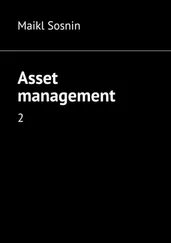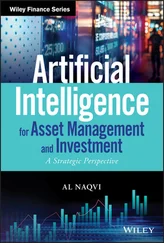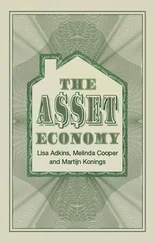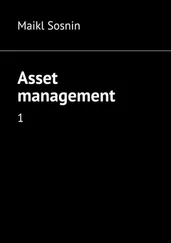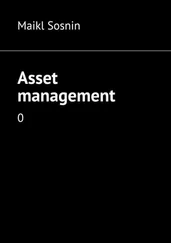| Terminal wealth, multiple, end of 15 years |
| Confidence Level (%) |
Conservative |
Moderate |
Aggressive |
| 1 |
1.3 |
1.1 |
0.9 |
| 5 |
1.5 |
1.4 |
1.3 |
| 10 |
1.7 |
1.7 |
1.6 |
| 25 |
2.0 |
2.1 |
2.2 |
| 50 |
2.3 |
2.7 |
3.2 |
| 75 |
2.7 |
3.6 |
4.5 |
| 90 |
3.2 |
4.5 |
6.3 |
| 95 |
3.5 |
5.2 |
7.6 |
| 99 |
4.1 |
6.8 |
11.0 |
These estimates of future wealth ignore any contributions or disbursements that may be added to or subtracted from the portfolios. To estimate future wealth taking cash flows into account, we would need to simulate the portfolios' performance between all cash flows throughout our investment horizon.
By mapping the portfolios' expected returns and standard deviations onto estimates of exposure to loss and the distribution of future wealth, we should have a clear idea of the merits and limitations of each portfolio. It is important to keep in mind, though, that there is no universally optimal portfolio; it is specific to each investor. If our focus is to avoid losses, the conservative portfolio might be optimal. If, instead, we believe that we can endure significant losses along the way in exchange for greater opportunity to grow wealth, then we might choose the aggressive portfolio. If our goal is to limit exposure to loss, yet still maintain a reasonable opportunity to grow wealth, then perhaps the moderate portfolio would suit us best.
Asset allocation is a complex process, yet one we should not ignore. Our intent in this chapter is to present the theoretical foundation of asset allocation as well as to discuss the practical implementation of this theory at its most basic level. In subsequent chapters, we describe various refinements to the basic approach described here. But before we move on to these refinements, we discuss some fallacies about asset allocation and do our best to dispel them.
1 Levy, H. and Markowitz, H. 1979. “Approximating Expected Utility by a Function of Mean and Variance,” American Economic Review, Vol. 69, No. 3 (June).
2 Markowitz, H. 1952. “Portfolio Selection,” Journal of Finance, Vol. 7, No. 1 (March).
3 Sharpe, W. 1987. “An Algorithm for Portfolio Improvement,” Advances in Mathematical Programming and Financial Planning, Vol. 1. Greenwich, CT: JAI Press Inc.
1 1.Markowitz (1952).
2 2.Levy and Markowitz (1979).
3 3.Kurtosis refers to the peakedness of a distribution. Kurtosis greater than 3 indicates that extreme returns are more likely than what one would expect from a normal distribution. Returns that are independent and identically distributed are likely to be normal.
4 4.This concept applies as well to any number of asset classes, but it is easier to visualize with only two asset classes.
5 5.See Chapter 1for a detailed discussion of these characteristics.
6 6.Our empirical analysis is meant for illustration, and we do not intend to offer conclusions about any specific portfolio, investment universe, or data set. We calibrate models and assumptions using reasonable market proxies such as the S&P 500 for US equities; MSCI World ex USA and MSCI emerging markets for foreign and emerging market equities; Bloomberg Barclays aggregate US Treasury and corporate bond indexes; Bloomberg commodities index; and the risk-free rate from Kenneth French's data website.
7 7.For those who care deeply about maximizing the portfolio's geometric mean, the arithmetic approach may still offer a reasonable approximation that can be tested for efficacy and compared to optimization with other more complex numerical procedures.
8 8.See Sharpe (1987). Sharpe's algorithm can easily be adapted to accommodate transaction costs and allocation constraints.
9 9.A continuous return equals the natural logarithm of 1 plus the discrete return. It is the return that if compounded continuously would give the discrete return. Continuous returns that are independent and identically distributed are normally distributed. It is therefore common practice to convert discrete returns, which are lognormally distributed owing to the effect of compounding, to continuous returns in order to estimate probabilities. We then convert the continuous return back to a discrete return by raising the base of the natural logarithm to the power of 1 plus the continuous return and subtracting 1.
CHAPTER 3 The Importance of Asset Allocation
FALLACY: ASSET ALLOCATION DETERMINES MORE THAN 90% OF PERFORMANCE
No doubt, asset allocation is important, even critical to investment success. Otherwise, why would we bother to write this book? Nevertheless, most investors, as well as academics, have a much inflated perception of the value of asset allocation compared to security selection.
THE DETERMINANTS OF PORTFOLIO PERFORMANCE
This misperception can be traced to an influential article published in the Financial Analysts Journal in 1986 called “The Determinants of Portfolio Performance.” 1 The authors, Gary Brinson, Randolph Hood, and Gilbert Beebower, analyzed the performance of 91 large corporate pension plans during the 10-year period from 1974 to 1983 in an effort to attribute their performance to three investment choices: asset allocation policy, timing, and security selection.
They defined the asset allocation policy return as the return of the long-term asset mix invested in passive asset class benchmarks. They then measured the return associated with deviations from the policy mix assuming investment in passive benchmarks, and they attributed this component of return to timing. Finally, they measured the return associated with deviations from the passive benchmarks within each asset class and attributed this component of return to security selection. For each of the 91 funds, they regressed total return through time on these respective components of return. These regressions revealed that asset allocation policy, on average across the 91 funds, accounted for 93.6% of total return variation through time and in no case less than 75.5%.
This methodology is flawed because it presents no notion of a normal or a default asset mix. Their analysis implicitly assumes that the pension plans' funds would otherwise be uninvested, perhaps contained in a very large coffee can. Because the authors failed to net out an average or typical asset mix, most of the variation in performance that they attributed to asset allocation policy arose not from the choice of a portfolio's asset mix but, instead, from merely the decision to invest. The authors simply demonstrated that we incur risk when we invest in risky assets.
A Practical View on Importance
To illustrate our point, consider a portfolio that consists of 75% technology stocks and 25% US bonds. From 2006 to 2013, what percentage of this portfolio's return variation is explained by asset allocation?
We begin by obtaining monthly historical returns for the actual portfolio. Next, we split the returns into two parts. The first part equals the monthly returns of a portfolio that holds 75% in a broad stock market index and 25% in US bonds. It mimics the asset allocation but ignores security selection. The second part equals the monthly returns of the actual portfolio – which contains a large concentrated position in technology stocks – in excess of the returns of the first part. It reflects the incremental return associated with security selection.
Читать дальше



